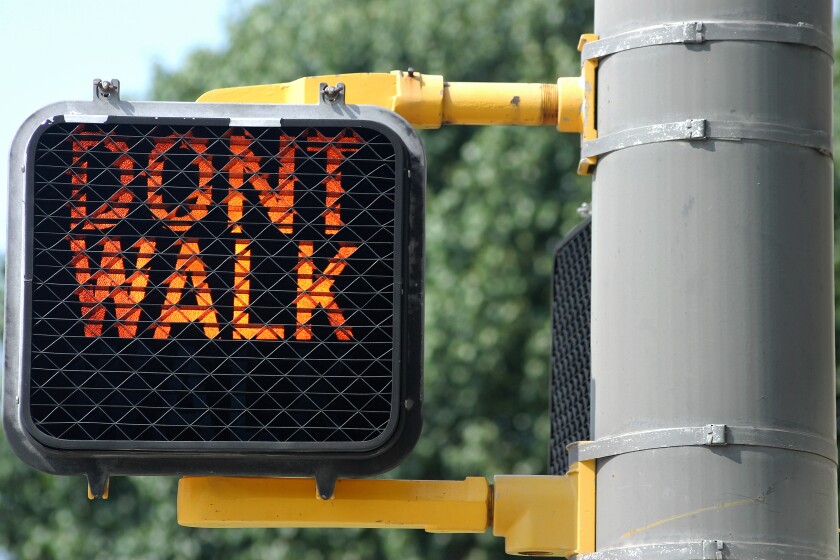The opposite has happened in the United States, according to a 53-page study released Tuesday, July 12, by Smart Growth America. Here, pedestrian deaths have risen dramatically in the past 12 years, including spiking during the pandemic, the study found.
The number of pedestrians killed in this country has increased 62 percent since 2009; an estimated 7,265 died last year. That's a 4.7 percent increase last year and pushes the average number of pedestrian deaths to 18 every day.
"We faced the same [pandemic limitations] the world did, but while our driving went down, our deaths went up," Beth Osborne, Smart Growth's vice president of transportation and thriving communities, said at a media briefing about the study. "Nearly everywhere is getting worse. Overall, the trend is consistent."
In 2017, the highest pedestrian death rate per 100,000 people was 3.28. Just four years later, in 2021, nine metro areas exceeded that rate, with Daytona Beach, Fla., the worst at 4.25.
The numbers also show higher pedestrian deaths among minorities and among people with low income.
Motor vehicle deaths from traffic accidents also have had record increases through the pandemic, but not as high as pedestrians. The belief is that those Americans who were driving during the height of the pandemic took advantage of wide open roads to drive much faster than normal, leading to more accidents with more serious injuries due to the higher speeds.
Although the volume of traffic over the course of the day has returned, Ms. Osborne said, that traffic is spread more evenly through the day. That means there is less congestion to slow traffic and more hours where drivers can drive faster, leading to more deaths, especially pedestrians.
Last fall, U.S. Transportation Secretary Pete Buttigieg declared war on traffic deaths, and in February he announced a series of steps to improve the situation, including designing better roads, improving emergency response and training drivers better. Smart Growth officials say there is still too much money dedicated to moving vehicles through areas as quickly as possible and only about 6 percent of funds are dedicated to pedestrian safety, which Ms. Osborne called a "side product."
The study found that about 65 percent of pedestrian deaths occur along busy arterial roads that carry a lot of traffic and have a lot of places people want to go. In the Pittsburgh area, that would be roads like Route 51/ Saw Mill Run Boulevard in the South Hills, McKnight Road in the North Hills and Business Route 22 in the eastern suburbs.
That is frustrating, Ms. Osborne said, because those arteries only make up about 15 percent of the road miles across the country. Finding solutions to make those roads less dangerous shouldn't be so difficult, she said.
"This is 100 percent doable," she said. "We can tackle 15 percent of the roads. Others have done it. We can do it, too."
Mayor Regina Romero of Tucson, Ariz., told reporters the country is facing "an epidemic of not having safe streets for all." Her city, listed as having the 13th highest number of pedestrian deaths, is making a deliberate effort to shift funds from road construction to creating safety measures to protect pedestrians and bicyclists.
Even smaller communities such as Pacific Grove, Calif., are paying attention to what they can do to improve pedestrian safety. Councilman Chaps Poduri said it became "alarmingly clear" to local officials that a five-way intersection near schools and popular businesses needed to be addressed after there were five pedestrian accidents within six months.
"We are turning back time," he said as the community studies how to improve the area. "Now, everything is a human-centered approach rather than a vehicle-centered approach."
Ms. Osborne said those efforts are impressive, but there needs to be a national effort.
"It's not enough to fix one corridor. We have to fix every corridor."
(c)2022 the Pittsburgh Post-Gazette. Distributed by Tribune Content Agency, LLC.
Related Articles










